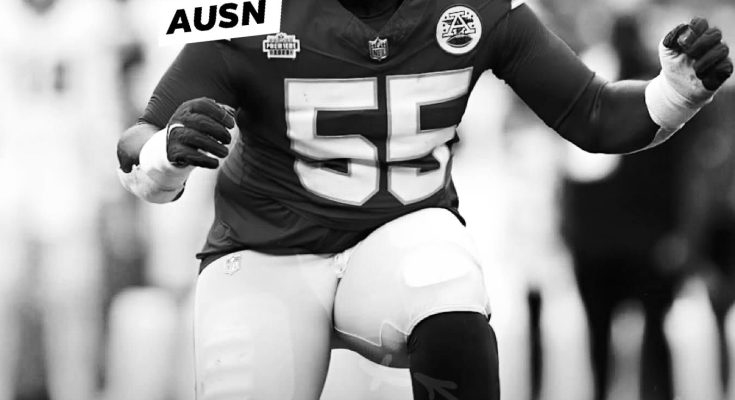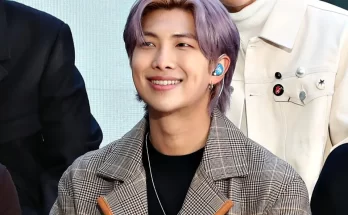Kansas City Chiefs fans were met with a gut punch on Tuesday morning after NFL insider Ian Rapoport reported that rookie defensive end Omarr Norman-Lott, the team’s second-round pick in this year’s draft, will miss the entire 2025 season after suffering a torn ACL. The injury is a devastating setback for a promising young player who had quickly become one of the more intriguing names to watch during the Chiefs’ preseason and early practice sessions. Now, instead of making an impact on the field this fall, Norman-Lott’s focus will shift entirely to recovery and preparation for the 2026 campaign, a year that suddenly looms as both a test of resilience and a chance at redemption.
For Kansas City, this loss is more than just a rookie going down—it’s the removal of a potentially vital rotational piece in Steve Spagnuolo’s defense. Norman-Lott, who impressed scouts with his blend of power and explosiveness during his time at USC, was drafted with the expectation that he would strengthen the Chiefs’ defensive line rotation alongside Chris Jones, George Karlaftis, and Charles Omenihu. The team had high hopes that his energy, quick first step, and ability to disrupt both run and pass plays would bring an added dimension to their already formidable front. Unfortunately, those plans will have to wait.
Rapoport’s report confirmed that Norman-Lott suffered the ACL tear during a recent practice session, a non-contact play that instantly raised concern among teammates and coaches. Sources close to the team say that after initial tests, the Chiefs’ medical staff confirmed the worst-case scenario: a complete tear that will require surgery and extensive rehabilitation. Though ACL injuries have become far more manageable thanks to advances in sports medicine, the process remains grueling—often involving nine to twelve months of recovery before a player can return to full strength. For Norman-Lott, that timeline likely means he won’t see the field again until next year’s training camp at the earliest.
Head coach Andy Reid expressed his disappointment but also his support for the young defensive lineman, emphasizing the organization’s confidence in his character and work ethic. Reid, who has seen countless players battle back from major injuries during his long career, noted that Norman-Lott has the mentality needed to handle the difficult road ahead. “He’s a tough kid,” Reid reportedly told local reporters. “He loves football, he’s committed, and he’s got the right attitude. We’re going to make sure he gets all the support he needs to come back stronger than ever.”
Teammates have echoed those sentiments, rallying behind Norman-Lott as he begins the early stages of recovery. Veterans like Chris Jones and Derrick Nnadi have already been in his ear, offering encouragement and perspective. For players who have spent years in the NFL trenches, the physical and emotional toll of injuries is something they understand well. Jones, a leader both on and off the field, reportedly told Norman-Lott to “keep his head high and focus on what’s next,” reminding him that setbacks can often become the foundation for even greater comebacks.
Before the injury, Norman-Lott had been one of the Chiefs’ standout rookies in offseason workouts. Coaches praised his quick adaptation to the defensive scheme and his strong showing in drills. His combination of size, athleticism, and technical refinement made him a favorite to earn meaningful snaps early in the season. The Chiefs saw in him a player capable of collapsing pockets, shedding blocks, and providing depth that would allow the team to rotate fresh bodies more effectively during critical stretches of games. That kind of flexibility is invaluable for a defense built on pressure and disruption.
His collegiate career at USC showcased exactly why Kansas City felt confident investing a second-round pick in him. Norman-Lott was known for his violent hands, relentless motor, and ability to impact plays even when double-teamed. His performance in big games stood out, particularly against strong offensive lines in the Pac-12, where he demonstrated a knack for penetrating the backfield and blowing up runs before they developed. His blend of raw strength and football IQ made him a favorite among draft analysts who believed he had first-round upside if not for depth concerns at his position in this year’s draft class.
For Kansas City’s front office, led by general manager Brett Veach, this injury represents a challenge in depth management but not necessarily a crisis. The Chiefs have built one of the league’s most balanced defensive units, and while Norman-Lott’s absence will be felt, the team still boasts quality depth across the line. Expect Spagnuolo to lean more heavily on veterans like Omenihu and Nnadi, as well as younger contributors such as Felix Anudike-Uzomah, who will likely see an uptick in playing time as the team adjusts its rotations. Still, losing a player like Norman-Lott at this stage stings—not just because of his potential production, but because of the developmental time that now slips away.
Injuries to rookies always come with an added sense of tragedy. The first NFL season is supposed to be a time of discovery, growth, and validation for players who have fought their entire lives to reach this level. For Norman-Lott, the excitement of achieving his dream will now be tempered by the reality of a long recovery process. Instead of building chemistry with teammates on the field, he’ll spend his days in the training room and physical therapy sessions, working through pain and repetition to rebuild his strength. It’s a mentally taxing journey that demands both patience and resilience, and for many young players, it can serve as a defining chapter in their careers.
The Chiefs organization has a history of handling player recoveries with care and patience, understanding that rushing a return from major injury can lead to setbacks. The medical and training staff will likely design a personalized rehabilitation program for Norman-Lott that emphasizes gradual progress, ensuring he doesn’t just return, but returns ready to compete at a high level. The franchise’s culture—one that values long-term player health and commitment—should serve him well.
From a team standpoint, Kansas City will now have to assess whether to bring in additional help at defensive end or rely on internal development. The Chiefs’ defensive philosophy emphasizes rotation and freshness, and depth is always a premium commodity, especially in a league as physically demanding as the NFL. With Norman-Lott out, the coaching staff may experiment with hybrid packages or shift certain linemen inside and out to maintain balance. This type of adaptability has long been one of Spagnuolo’s trademarks as a coordinator, allowing Kansas City to weather injuries without significant drop-offs.
Fans have already taken to social media to express their disappointment and support for the young defender. Many recall similar situations in which players bounced back even stronger after major injuries—examples like Nick Bosa, who tore his ACL early in his career but returned to become one of the most dominant defensive ends in football. Those success stories serve as a beacon for Norman-Lott, reminding him that his NFL story is far from over.
The broader perspective for the Chiefs remains optimistic. The team still has its core intact, led by Patrick Mahomes and a defense that ranked among the league’s best last season. Losing Norman-Lott does not derail their championship aspirations, but it does reinforce a painful truth about the sport’s fragility. Every season brings unpredictable challenges, and great teams are often defined by how they respond to adversity. For Kansas City, this is another test of their resilience, depth, and leadership.
Norman-Lott’s journey from injury to comeback will be closely followed not only by Chiefs fans but by the league at large. His story embodies the perseverance and determination that define NFL athletes. While the ACL tear halts his rookie season before it even begins, it also presents an opportunity—to grow mentally, to strengthen physically, and to return with an even greater hunger to succeed. The Chiefs’ coaching staff has every reason to believe he will embrace that challenge fully.
Looking ahead, the 2026 season could become a pivotal moment in Norman-Lott’s young career. By then, he will have spent a full year studying the Chiefs’ defensive playbook, observing game plans, and understanding the nuances of NFL-level competition from the sidelines. That kind of mental preparation, combined with the physical comeback, can transform a setback into a stepping stone. Many great players have emerged from injuries with newfound perspective, appreciating the game even more deeply after being forced away from it.
For now, Norman-Lott’s focus will be on taking each day as it comes. Surgery, rehabilitation, strength training, and mental conditioning will dominate his schedule. His attitude and discipline will determine how quickly and effectively he returns to the field. If the early impressions from teammates and coaches are any indication, the Chiefs have no doubt that he possesses the fortitude to overcome this hurdle.
As the 2025 NFL season unfolds, the Chiefs will continue to compete with their eyes on another deep playoff run, but there will undoubtedly be a quiet motivation running through their locker room—a desire to play for their sidelined teammate who had been ready to make his mark. Norman-Lott may not be in the trenches this year, but his spirit and determination will remain part of the team’s heartbeat.
In the unforgiving world of professional football, injuries are inevitable. Yet, the character of a player is often revealed in how he responds to them. Omarr Norman-Lott now faces the toughest challenge of his young career, but his response—rooted in resilience, hard work, and belief—will define his future in the league. As he embarks on the long road back, both he and the Chiefs understand that while this is a painful detour, it is not the end of the story. If anything, it might be the beginning of one that ultimately showcases his strength, perseverance, and determination to rise again in 2026.



